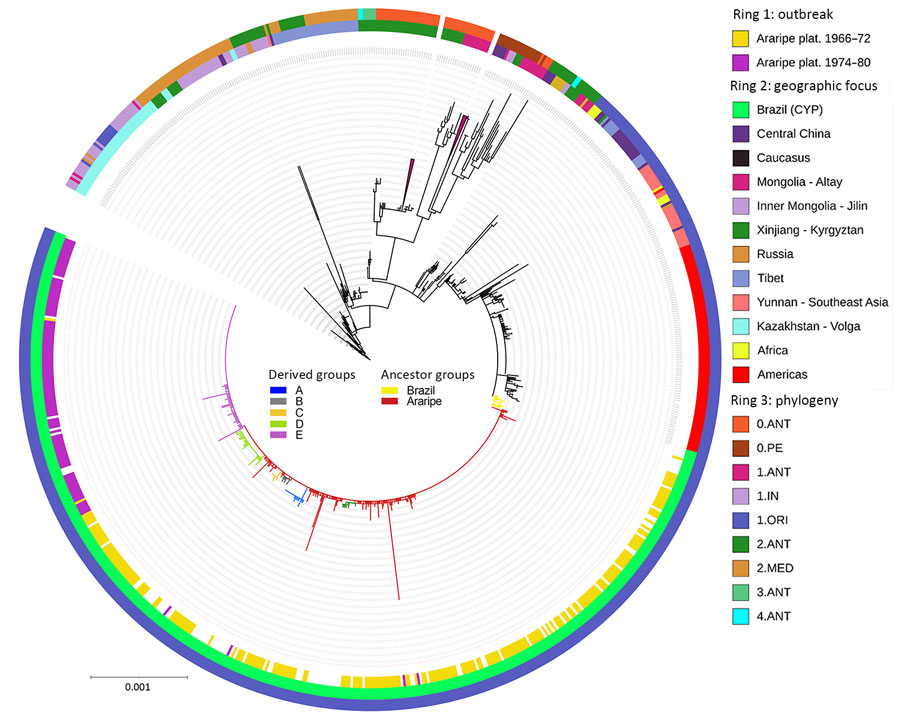Volume 30, Number 9—September 2024
Research
Ecologic, Geoclimatic, and Genomic Factors Modulating Plague Epidemics in Primary Natural Focus, Brazil
Figure 12

Figure 12. Genomic characterization of Yersinia pestis strains in a study of ecologic, geoclimatic, and genomic factors modulating plague epidemics in primary natural focus, Brazil. Phylogenetic tree was based on the 1,867 single-nucleotide variants identified in the core genome from 913 strains isolated in the Araripe Plateau and included in the analysis. The rings contain metadata regarding the epidemiologic features from the Araripe Plateau outbreaks (ring 1), the attributed geographic foci (ring 2), and genetic group provided in the NextStrain dataset (https://nextstrain.org) (ring 3). Brazil branches are colored according to their genetic subgroups. Scale bar indicates nucleotide substitutions per site.
Page created: July 11, 2024
Page updated: August 22, 2024
Page reviewed: August 22, 2024
The conclusions, findings, and opinions expressed by authors contributing to this journal do not necessarily reflect the official position of the U.S. Department of Health and Human Services, the Public Health Service, the Centers for Disease Control and Prevention, or the authors' affiliated institutions. Use of trade names is for identification only and does not imply endorsement by any of the groups named above.